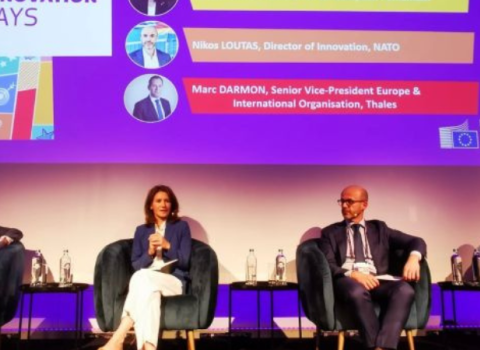Lobby group joins calls for greater ‘alignment’ of the European Innovation Council and the European Institute of Innovation & Technology

Photo credits: BigStock
Europe’s largest university lobby group is calling on the Commission to conduct a “thorough revision” of research translation and commercialisation in pillar 3 of the next research programme FP10, and to “strengthen alignment” between the European Innovation Council (EIC) and the European Institute of Innovation & Technology (EIT).
“The European University Association’s vision for FP10 presents a detailed analysis which identifies numerous suggestions that will help to make this programme even more successful than its predecessor,” said Paul Boyle, vice president of EUA.
The European Commission should increase synergies between funding instruments and programmes while working to reduce duplication and overlap, EUA says.
At the same time, there should be a review of the existing instruments and a simpler programme structure. “This is the key if we want to make FP10 more straightforward, allowing beneficiaries to navigate opportunities more easily,” Stephane Berghmans, EUA director for research and innovation told Science|Business.
EUA points the finger at EIC and the EIT as funding bodies that overlap and need to be reviewed. This is not a call for a “reduction of the number of instruments,” Berghmans said. Rather, an evaluation of instruments such as EIT will enable informed, holistic decisions, identifying overlaps - and eliminating them.
While the EUA wants a review, other stakeholders have been calling for EIT to be merged with EIC in the next Framework Programme, which is due to start in 2028.
The Danish government took the lead in saying EIT should be “discontinued”, while Portuguese MEP Maria da Graça Carvalho, one of the legislators behind the formation of EIT in 2008, recently joined others in calling for a substantial reassessment of the agency.
Carvalho has been a big supporter EIT in the European Parliament, but following her appointment as minister for environment and energy in the new Portuguese government, she will not stand in the June EU elections. EIT will lose an influential champion.
Translating research to market
EUA also wants better synergies between the European Research Council (ERC) and EIC, to turn more ERC proof of concept projects into start-ups that are eligible for EIC scale-up funding.
At the same time, the association is making the case for a 30% budget increase for pillar 1, which could translate into a substantial increase in the ERC budget.
The president of Stockholm University, Astrid Söderbergh Widding, who chaired the group that drew up the EUA position paper, told Science|Business the current research programme Horizon Europe is increasingly favouring applied research projects that are closer to market. This comes at the cost of investment in basic research. “FP10 should have a ‘well-balanced mix of support for basic research, applied research, and innovation,’” she said.
In February, ERC president Maria Leptin released a letter calling on ERC grant holders to lobby politicians to double the research budget in FP10.
EUA’s wish list
In common with other research organisations that have published a prospectus for FP10, EUA wants to see a doubling of the budget to €200 billion, to help pull in private investment and guarantee that all research proposals that are assessed as excellent will get funded.
Marc Lemaître, head of the EU's research directorate, research commissioner Iliana Ivanova, MEPs and other stakeholders recently lamented the funding gaps in the past and current framework programmes.
It’s also the case that money has been shifted out of Horizon Europe, to fund COVID-19 related projects, for example. To ensure more efficiency and consistency, EUA is calling for a ring-fenced budget, with more funding opportunities for smaller, collaborative research projects.
EUA also wants to see a greater focus on disseminating research outcomes, to make scientific advances more relevant to citizens, noting that improved communications will help in combatting misinformation and disinformation, while fostering the translation of academic research.
"The EU’s Framework Programme for research and innovation must be more than a funding mechanism. Rather, it should pave the way for Europe to be a forceful research and innovation agent,” said Söderbergh Widding. “With these recommendations, the university sector commits to a co-designed FP10, which is so necessary for the future of the EU and the wider world."
Dual use technologies
The discussion about dual-use research with military and defence applications in FP10 does not feature in EUA’s prospectus.
The Commission recently published a white paper on options for enhancing support for dual-use technologies in FP10, signalling a major shift in the scope of EU framework programmes.
Berghmans said EUA is reviewing the defence issue and the Commission's three options separately from the FP10 paper.
"We are consulting our membership with the aim of sharing EUA's position and contributing to the consultation by the end of April," he said.





 A unique international forum for public research organisations and companies to connect their external engagement with strategic interests around their R&D system.
A unique international forum for public research organisations and companies to connect their external engagement with strategic interests around their R&D system.